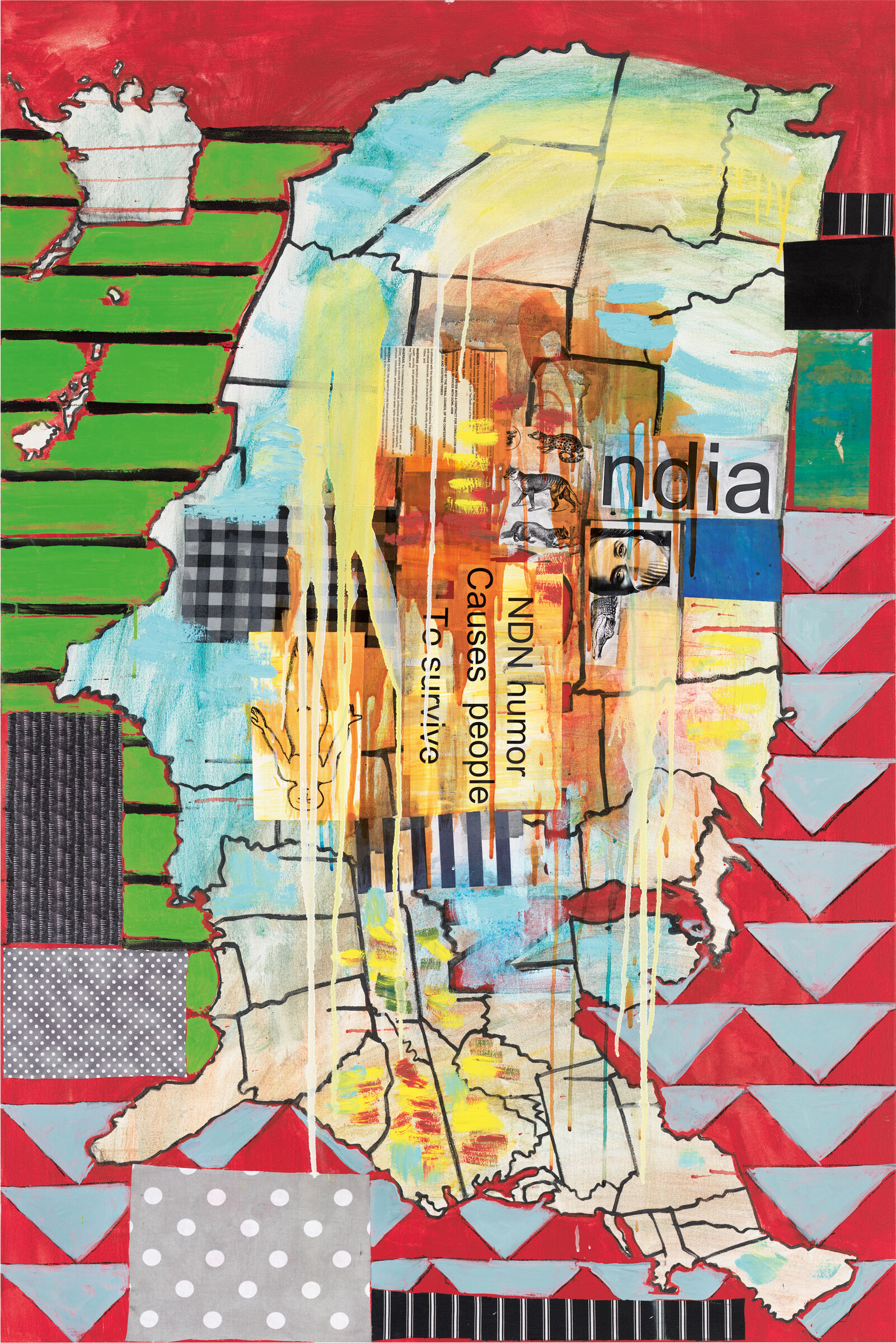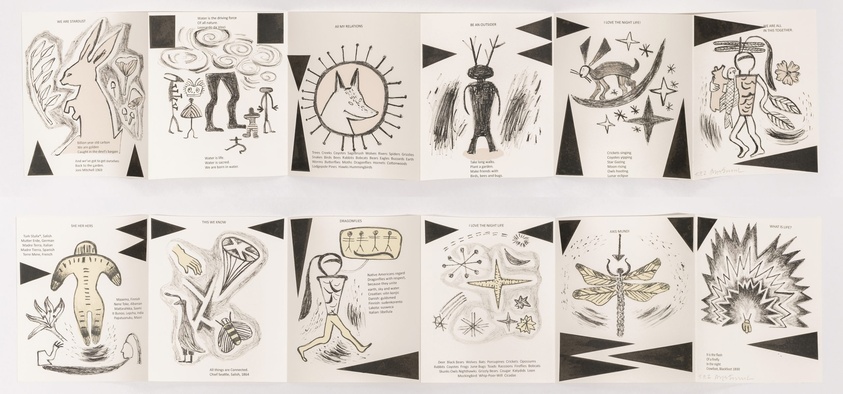Minisode: Jaune Quick-to-See Smith on her Whitney Retrospective
June 23, 2023
0:00
Minisode: Jaune Quick-to-See Smith on her Whitney Retrospective
0:00
Jaune Quick-to-See Smith: Yes it is like that—fall down the stairs and land on my feet. That is how it is. I think I am a pretty lucky person, a lucky duck.
My name is an old family name. It doesn't have anything to do with art. It is not about seeing art it is about insight. I've been making art as far back as I can remember. When I was in the first grade I didn't know the word artist, I had never heard that word. I didn't know anything about it. I just knew that it was my zone—I wanted to be where I could use those materials.
The maps that I've been doing, I see them as landscapes and they all tell stories. My art practice has grown over the years. I always see my works as inhabited landscapes. From early pastel abstract swaths of color to where we are now, even figures, to me it is still landscape.
We are in Corrales, New Mexico which is north of Albuquerque. Corrales is a small farm community of about 15,000 people. This land was given to Spanish people who grew vineyards here. It was given to them by the King of Spain they like to say but, of course, it is unceded land. And of course it once belonged to Pueblo people. Anytime people dig in their backyard here they dig up doubloons and tin cups and underneath that they dig up pottery shards and house foundations. So this has been a farm community probably for eons of time.
Native peoples have always studied the flora, fauna, and land here. It is a culmination of figuring out where we came from. All of the origin stories are about that. These stories go back 15,000 years and they match what the scientists are saying about the movement of glaciers. And that is extraordinary, it blows my mind to think that our oral history goes back that far.
Our Indian elders studied it so well. Their knowledge of it is so complete. They are always looking back and asking what would the ancestors do? What would they say? We have to think about our future generations and if these resources will be here to serve them. Will our tribe be able to support them? And so how can we get some of these messages out there? Part of it is in the work that I do.
Being Indigenous and making art means that you are looking at the world through lenses that are curved or changed by your upbringing and by your worldview as an Indigenous person. We get together and talk amongst ourselves about how we can change things or make things better—how we can put messages out there that have a relationship to the Indigenous world. Indigenous peoples believe that we live in harmony with all of the plants, animals, fishes, and cosmos. We really do believe that. So that's the first thing that is really distinct in our work and in what we present to the public.
Who has a better reason to paint a map? Me, a Native person who is all about the land and the history that's taken place here. How can I tell it all in a way that is different from what you learned in school? I'm showing you an American map; I'm putting my heritage in there. I take newspaper clippings and put them in every single state just to prove that there are Indians doing things there. Yes, there is Indian life there. Yes, they live everywhere all over the United States. When I started using text it seemed like a way to say something directly instead of just alluding to it—whether it be text from old Indian speeches or headlines from the New York Times or Albuquerque Journal.
What I am doing is putting messages inside the Museum, inside the corporate world where they are not supposed to be. It is where you are supposed to make nice and entertain people with money. That is kind of a given. And I am going to the source. They will find things about the environment, racism, and the treatment of animals.
People walk through a museum and they are drawn to what they are drawn to whether it is color or figures. Some people stop and take the time to read things but not everyone wants to do that. The messages in my paintings are placed where they are not totally expected.
Most people will never have heard of me and that is not off-putting. Maybe it will start to crack this issue of Native Americans being invisible. Most people say, "I've never met an Indian, I've never seen one before." That is pretty prominent. There are a bunch of Indians living in New York who encounter this. That is how it goes in this society. This is high society and it is white. And this is BIPOC here; we are just little grains of sand trying to make a little change.
I just move forward and do what I know how to do and what I am teaching myself to do because I am constantly learning new things. It is about growing no matter my age. Am I engaged with my practice? I would say I am right now and I take advantage of every opportunity to demonstrate that. But time is fleeting and we don't know where things will be ten years from now. So I don't concentrate on that; I just concentrate on making work that I think counts for something.
Jaune Quick-to-See Smith on the occasion of Jaune Quick-to-See Smith: Memory Map.

